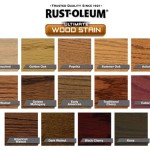Maintaining a Pristine Vehicle Interior: A Comprehensive Guide to Car Interior Cleaning
The interior of a vehicle, much like the interior of a home, accumulates dirt, dust, and debris over time. Regular cleaning is crucial not only for aesthetic reasons but also for maintaining a healthy environment within the car. Dust particles, allergens, and mold spores can accumulate on surfaces, contributing to poor air quality and potential health issues. Furthermore, spills, stains, and food particles can create unpleasant odors and attract pests. This article provides a detailed guide to cleaning the interior of a car, covering essential tools, specific cleaning techniques for different surfaces, and preventive measures to maintain cleanliness.
Effective car interior cleaning involves a systematic approach, starting with removing loose debris and progressing to detailed cleaning of various surfaces. The process typically involves vacuuming, wiping down surfaces, cleaning upholstery and carpets, and addressing specific problem areas like stains and odors. Choosing the right cleaning products and tools is essential for achieving optimal results without damaging delicate materials. A well-executed cleaning regimen can significantly improve the overall driving experience and prolong the lifespan of the vehicle's interior components.
Gathering Essential Cleaning Supplies and Tools
Before embarking on the cleaning process, assembling the necessary supplies and tools is crucial for efficiency and effectiveness. A comprehensive cleaning kit should include a variety of items designed for different cleaning tasks and surfaces. This preparation phase minimizes interruptions and ensures a smooth and thorough cleaning process.
A high-powered vacuum cleaner is indispensable for removing loose debris from carpets, upholstery, and crevices. A vacuum with various attachments, such as a crevice tool and a brush attachment, allows for reaching tight spaces and agitating dirt from fibers. Microfiber cloths are essential for wiping down surfaces without leaving streaks or lint. These cloths are highly absorbent and gentle on delicate materials like dashboards and leather.
Appropriate cleaning solutions are required for different surfaces. An all-purpose cleaner suitable for vinyl, plastic, and rubber surfaces is a good starting point. Specific cleaning products are needed for upholstery and carpets, depending on the material. Leather cleaner and conditioner are necessary for leather seats and trim to prevent drying and cracking. Glass cleaner is essential for achieving streak-free windows and mirrors. Additionally, upholstery stain remover is helpful for addressing stubborn stains on seats and carpets.
Other useful tools include a detailing brush for cleaning vents and intricate areas, a toothbrush for scrubbing tight spots, a small bucket for mixing cleaning solutions, and a spray bottle for applying cleaning products. Protective gloves are recommended to protect hands from harsh chemicals and dirt. Finally, a trash bag is needed for collecting debris and discarded items.
Step-by-Step Guide to Cleaning Different Interior Surfaces
The cleaning process should begin with a thorough vacuuming of the entire interior. This initial step removes loose dirt, dust, and debris, preparing the surfaces for more detailed cleaning. Vacuuming should be done systematically, starting with the floor mats and carpets, then moving to the seats, crevices, and hard-to-reach areas.
Floor mats should be removed from the car and vacuumed separately. If the floor mats are heavily soiled, they may require washing with soap and water or a dedicated carpet cleaner. After vacuuming, the seats should be thoroughly cleaned. For fabric upholstery, use an upholstery cleaner and a soft brush to agitate the cleaner into the fibers. Use a clean microfiber cloth to wipe away the excess cleaner. For leather seats, apply a leather cleaner and conditioner according to the manufacturer's instructions. Avoid using harsh chemicals or abrasive cleaners on leather, as they can damage the surface.
Next, clean the dashboard, console, and door panels. Use an all-purpose cleaner and a microfiber cloth to wipe down these surfaces. Pay attention to areas that are frequently touched, such as door handles, steering wheel, and gear shift. For vents and intricate areas, use a detailing brush or a toothbrush to remove dust and debris. Clean the interior windows and mirrors using a glass cleaner and a clean microfiber cloth. Ensure that the glass cleaner is designed for automotive use to avoid damaging tinted windows. Work from top to bottom and use a clean, dry cloth to buff the glass for a streak-free finish.
For particularly stubborn stains on upholstery or carpets, apply an upholstery stain remover according to the product instructions. Test the stain remover in an inconspicuous area first to ensure it does not discolor the fabric. Allow the stain remover to sit for the recommended time, then blot the stain with a clean microfiber cloth. Repeat the process if necessary. For sticky residues or greasy spots, use a degreasing cleaner and a microfiber cloth to gently remove the residue.
Once all surfaces have been cleaned, allow the interior to air out completely. Open the doors and windows to promote air circulation and remove any lingering odors. This step is particularly important after using cleaning products with strong scents. Consider using an air freshener or odor eliminator to further freshen the interior. Replace floor mats and any other items that were removed during the cleaning process.
Addressing Specific Cleaning Challenges: Stains, Odors, and Mold
Specific cleaning challenges, such as stains, odors, and mold, require specialized cleaning techniques and products. Addressing these issues promptly and effectively is crucial for maintaining a clean and healthy vehicle interior. Ignoring these problems can lead to more significant damage and potential health concerns.
Various types of stains can occur in a vehicle interior, including food spills, beverage stains, and grease marks. Different types of stains require different cleaning approaches. For example, coffee and tea stains can often be removed with a solution of warm water and mild detergent. Blood stains should be treated with cold water and a stain remover containing enzymes. Grease stains can be tackled with a degreasing cleaner or a solvent-based stain remover. It is important to act quickly on stains to prevent them from setting into the fabric or carpet fibers.
Unpleasant odors can be caused by a variety of factors, including food spills, pet odors, and mold growth. Identifying the source of the odor is essential for effective odor elimination. For mild odors, airing out the vehicle and using an air freshener may be sufficient. For more persistent odors, consider using an odor eliminator spray or a fabric refresher. Baking soda can also be used to absorb odors. Sprinkle baking soda on carpets and upholstery, let it sit for several hours, and then vacuum it up.
Mold growth can occur in damp or humid environments, particularly if spills are not cleaned up promptly. Mold can cause a musty odor and pose health risks. To remove mold from a vehicle interior, first, identify and address the source of the moisture. Then, use a mold and mildew cleaner to treat the affected areas. Wear gloves and a mask to protect yourself from mold spores. Scrub the affected areas with a brush and wipe away the mold with a clean microfiber cloth. Allow the area to dry completely. In severe cases of mold growth, professional cleaning may be necessary.
Preventive measures are crucial for minimizing the occurrence of stains, odors, and mold. Promptly clean up spills and messes as soon as they occur. Use seat covers to protect upholstery from stains and wear. Avoid eating or drinking in the car whenever possible. Regularly vacuum the interior to remove dirt and debris. Park the car in a well-ventilated area to prevent moisture buildup. Consider using a dehumidifier inside the car during humid weather. By taking these preventive measures, the vehicle interior can remain clean and fresh for longer periods.
/how-to-clean-car-interior-4775265-08-841a91bf649c481a8663348427a23df3.jpg?strip=all)
How To Clean A Car Interior

How To Keep Your Car Interior Clean

How To Clean Your Car S Interior Like A Pro Columbia Auto Care Wash
:max_bytes(150000):strip_icc()/how-to-clean-car-interior-4775265-10-3ae26ac90ed1419dab07ea0b9ec06e8a.jpg?strip=all)
How To Clean A Car Interior

Top 5 Benefits Of Interior Car Detailing

Best Car Interior Cleaners Review 2024 Ratings
How To Clean Your Car Interior Like A Professional Detailer

15 Tips On How To Clean Interior Of Car

How To Clean Your Car Interior Like A Pro Skys The Limit Care

Interior Cleaning From Top To Bottom Coarse Fine Škoda Storyboard
Related Posts








